Cook Chutneys ~ Making Chutney recipes
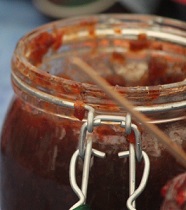 Over-ripe, soft fruit and vegetables are the best for chutneys as they will soften into pulp more quickly. You can use almost any fruit and vegetable to make chutney – here are some ideas: mango, banana, tomato, apple, rhubarb, apricot, zucchini, onion, pumpkin, pepper, carrot, and eggplant. Likewise, there are lots of different herbs and spices you can choose from – bay leaves, chilli, cumin, coriander, cardamom, cinnamon, cloves, ginger, allspice, peppercorns, paprika, and garlic. Add interest to your chutney by adding dried fruit, nuts or crystallised ginger.
...(Excerpt from page) Click to read more Over-ripe, soft fruit and vegetables are the best for chutneys as they will soften into pulp more quickly. You can use almost any fruit and vegetable to make chutney – here are some ideas: mango, banana, tomato, apple, rhubarb, apricot, zucchini, onion, pumpkin, pepper, carrot, and eggplant. Likewise, there are lots of different herbs and spices you can choose from – bay leaves, chilli, cumin, coriander, cardamom, cinnamon, cloves, ginger, allspice, peppercorns, paprika, and garlic. Add interest to your chutney by adding dried fruit, nuts or crystallised ginger.
...(Excerpt from page) Click to read more
|
| Crayfish Growing at Home
See how someone was able to turn their backyard swimming pool into a crayfish farm, to grow red claw, in the suburbs of Melbourne....(Excerpt from page) Click to read more
|
Drinks from the Garden in Summer
 Summer is a thirsty time of year: and the budget can really be blown out by drinks. For something that is different, classy, and will save you money as well: try growing your own drinks. Whether it be something as simple as a sprig of mint in a jug of water; or something more involved such as home-made lemonade: you really can’t beat a home made beverage on a hot day....(Excerpt from page) Click to read more Summer is a thirsty time of year: and the budget can really be blown out by drinks. For something that is different, classy, and will save you money as well: try growing your own drinks. Whether it be something as simple as a sprig of mint in a jug of water; or something more involved such as home-made lemonade: you really can’t beat a home made beverage on a hot day....(Excerpt from page) Click to read more
|
Grow and Use Asparagus
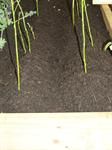 Growing asparagus (Asparagus officinalis) is a long-term commitment, but well worth the effort. It will grow from seed or transplanted crowns. Be warned that if you grow from seed, you may have to wait several years before you harvest anything. If you can get a hold of crowns, plant them at 50cm intervals at a depth of around 10cm. ...(Excerpt from page) Click to read more Growing asparagus (Asparagus officinalis) is a long-term commitment, but well worth the effort. It will grow from seed or transplanted crowns. Be warned that if you grow from seed, you may have to wait several years before you harvest anything. If you can get a hold of crowns, plant them at 50cm intervals at a depth of around 10cm. ...(Excerpt from page) Click to read more
|
Growing and Using Ginger
 Ginger (Zingiber officinale), a native to the hot tropics of South East Asia grows well in many parts of Australia. In mild to hot climates it is an obvious plant to include in any herb or cottage garden....(Excerpt from page) Click to read more Ginger (Zingiber officinale), a native to the hot tropics of South East Asia grows well in many parts of Australia. In mild to hot climates it is an obvious plant to include in any herb or cottage garden....(Excerpt from page) Click to read more
|
| Growing Rhubarb
Now is the time to plant new rhubarb crowns or lift and divide old ones. Rhubarb crowns are readily available from nurseries throughout winter and early spring....(Excerpt from page) Click to read more
|
Growing Silver Beet and Spinach
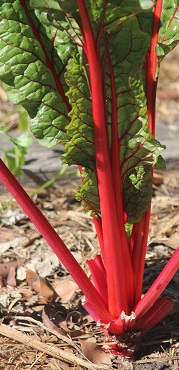 Silver beet, also called "chard" and spinach are two of the easiest vegetables to grow. These are no-fuss plants, given the right conditions. ...(Excerpt from page) Click to read more Silver beet, also called "chard" and spinach are two of the easiest vegetables to grow. These are no-fuss plants, given the right conditions. ...(Excerpt from page) Click to read more
|
How to Grow Your Own Produce
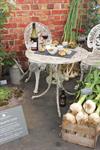 There is nothing better than fresh produce from your own garden. It's healthier, it will usually keep longer, taste better; and it always gives you a sense of excitement and satisfaction that just can't be equalled by a purchase from a supermarket....(Excerpt from page) Click to read more There is nothing better than fresh produce from your own garden. It's healthier, it will usually keep longer, taste better; and it always gives you a sense of excitement and satisfaction that just can't be equalled by a purchase from a supermarket....(Excerpt from page) Click to read more
|
How to Harvest and Preserve Fragrant Flowers
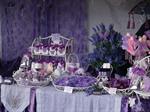 Water Drying
Some flowers will dry naturally if left in a vase of water eg. proteas, hydrangeas. For best results, pick the flower just as it is beginning to dry of it's own accord on the plant, and stand in a small amount of water (a couple of centimetres deep). ...(Excerpt from page) Click to read more Water Drying
Some flowers will dry naturally if left in a vase of water eg. proteas, hydrangeas. For best results, pick the flower just as it is beginning to dry of it's own accord on the plant, and stand in a small amount of water (a couple of centimetres deep). ...(Excerpt from page) Click to read more
|
How to Keep Bantams
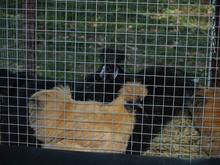 Bantams, like all chickens, love to graze on grass - but are preferred for the family backyard as they do less damage to garden beds and the lawn, yet are still useful for reducing garden pests and cleaning up kitchen scraps. ...(Excerpt from page) Click to read more Bantams, like all chickens, love to graze on grass - but are preferred for the family backyard as they do less damage to garden beds and the lawn, yet are still useful for reducing garden pests and cleaning up kitchen scraps. ...(Excerpt from page) Click to read more
|
How to Make Jam
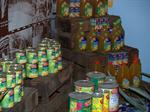 Jams and jellies are a great way to preserve fruit. They are made by boiling fruit in water and sugar until it reaches a setting point. The fruit is primarily preserved by the action of sugar. As long as jams and jellies are made and stored appropriately (with clean equipment following a recipe then stored in a dry, cool place in an airtight container), they have a long shelf life....(Excerpt from page) Click to read more Jams and jellies are a great way to preserve fruit. They are made by boiling fruit in water and sugar until it reaches a setting point. The fruit is primarily preserved by the action of sugar. As long as jams and jellies are made and stored appropriately (with clean equipment following a recipe then stored in a dry, cool place in an airtight container), they have a long shelf life....(Excerpt from page) Click to read more
|
How to Make Pickles from Fruit and Vegetables
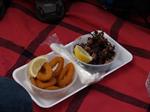 How to Make Pickled Foods...(Excerpt from page) Click to read more How to Make Pickled Foods...(Excerpt from page) Click to read more
|
| Making Fruit Jellies
Fruit jellies are simple to make and great gifts, if you don't eat everything you make. Mint currant or cranberry jelly are typical examples, both being great accompaniments to meat dishes.They can be made with fruits or herbs, and will keep for a long time if stored properly....(Excerpt from page) Click to read more
|
| Natural Gardening
There’s nothing more natural than a garden; and nothing more appropriate than natural products and techniques for developing and maintaining your garden. Gardeners have a choice: either work with nature, or work against it....(Excerpt from page) Click to read more
|
PERMACULTURE & Sustainability
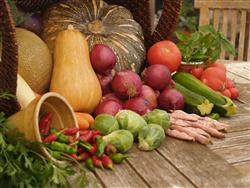 Our approach to growing plants increasingly needs to be environmentally friendly and sustainable in a world where resources are being used faster than they are being replenished. Sustainable Horticulture encompases both careful planning to avoid over use of resources, as well as applying effective cultural techniques that will get maximum return with minimum depletion of resources....(Excerpt from page) Click to read more Our approach to growing plants increasingly needs to be environmentally friendly and sustainable in a world where resources are being used faster than they are being replenished. Sustainable Horticulture encompases both careful planning to avoid over use of resources, as well as applying effective cultural techniques that will get maximum return with minimum depletion of resources....(Excerpt from page) Click to read more
|
| Spices
|
Vegetables to Grow in Winter
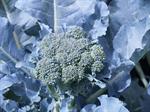 Winter Vegies in the Sub Tropics and Tropics
Lack of warmth is not such a problem in northern Australia over winter.
In fact, with lower humidity than summer, crops like zucchini, tomatoes, lettuce, snow peas and cucumber are often easier to grow over a tropical winter than a tropical spring or summer....(Excerpt from page) Click to read more Winter Vegies in the Sub Tropics and Tropics
Lack of warmth is not such a problem in northern Australia over winter.
In fact, with lower humidity than summer, crops like zucchini, tomatoes, lettuce, snow peas and cucumber are often easier to grow over a tropical winter than a tropical spring or summer....(Excerpt from page) Click to read more
|
Water Tanks
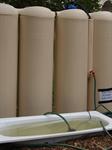 Collecting and using rain water is a great way to save on water bills and live a "greener" life. You need something to collect and store water in though; and that's where you a rain water tank comes in....(Excerpt from page) Click to read more Collecting and using rain water is a great way to save on water bills and live a "greener" life. You need something to collect and store water in though; and that's where you a rain water tank comes in....(Excerpt from page) Click to read more
|